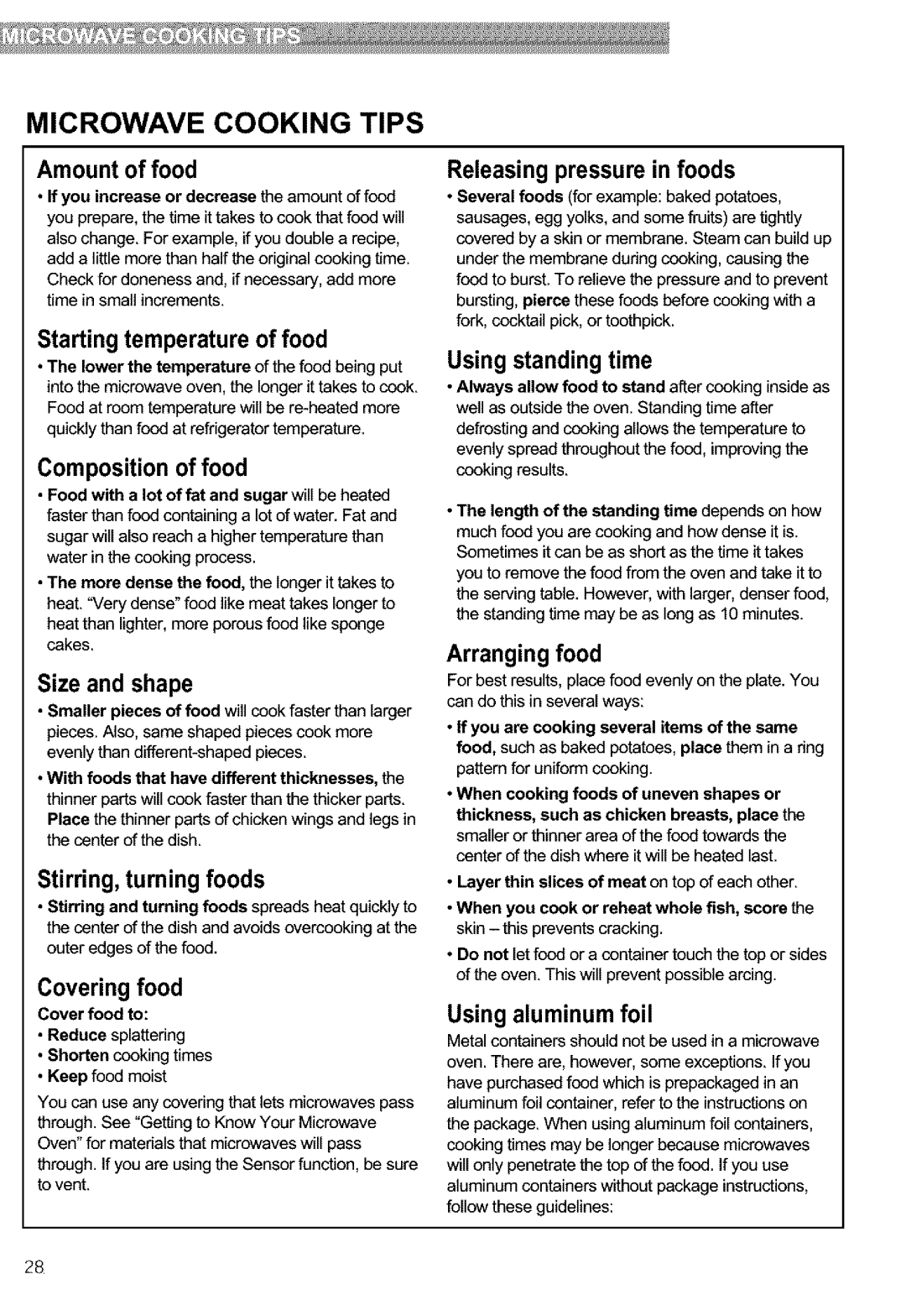721.63652, 721.63653, 721.63659, 721.63654 specifications
The Kenmore 721 series, comprising models 721.63654, 721.63659, 721.63653, and 721.63652, represents a popular line of over-the-range microwaves that blend versatility, efficiency, and style. Ideal for any kitchen environment, these models boast a variety of features aimed at enhancing cooking convenience and improving overall user experience.One standout feature across the Kenmore 721 series is their spacious capacity. With up to 1.8 cubic feet of interior space, these microwaves can easily accommodate larger dishes, making meal preparation for families or gatherings a less daunting task. This spaciousness is complemented by a turntable that ensures even heating and cooking of food, preventing cold spots and ensuring thorough results.
In terms of power, the Kenmore 721 series offers impressive wattage, typically around 1000 watts. This high power output results in quicker cooking times, allowing users to prepare meals efficiently. Furthermore, the different power levels provide options for various cooking needs, whether it be reheating leftovers, defrosting meats, or cooking fresh vegetables.
User-friendly controls are another highlight of these microwaves. Equipped with a digital display and intuitive button controls, users can easily navigate through the settings and options. Preset cooking functions for items like popcorn, pizza, and beverages simplify the cooking process, making it easier for anyone to achieve perfect results.
In addition to efficiency, the Kenmore 721 microwaves are designed with aesthetics in mind. Their sleek, modern appearance, available in stainless steel or other finishes, ensures they fit seamlessly with most kitchen decors. The over-the-range design also serves a dual purpose, providing valuable additional space above the cooktop while integrating a powerful ventilation system to remove smoke and odors from the kitchen during cooking.
Advanced technologies, such as sensor cooking, are incorporated into these models. This feature automatically adjusts cooking time and power levels based on the humidity levels detected within the microwave, ensuring that food is cooked perfectly every time.
Safety is also a priority, with features such as child lock functionality, which prevents unsupervised use. Moreover, easy-to-clean surfaces and removable filters contribute to maintaining hygiene and operational efficiency.
Overall, the Kenmore 721.63654, 721.63659, 721.63653, and 721.63652 microwaves represent a sophisticated solution for modern cooking, enriching culinary experiences while making everyday kitchen tasks simpler and more enjoyable.

